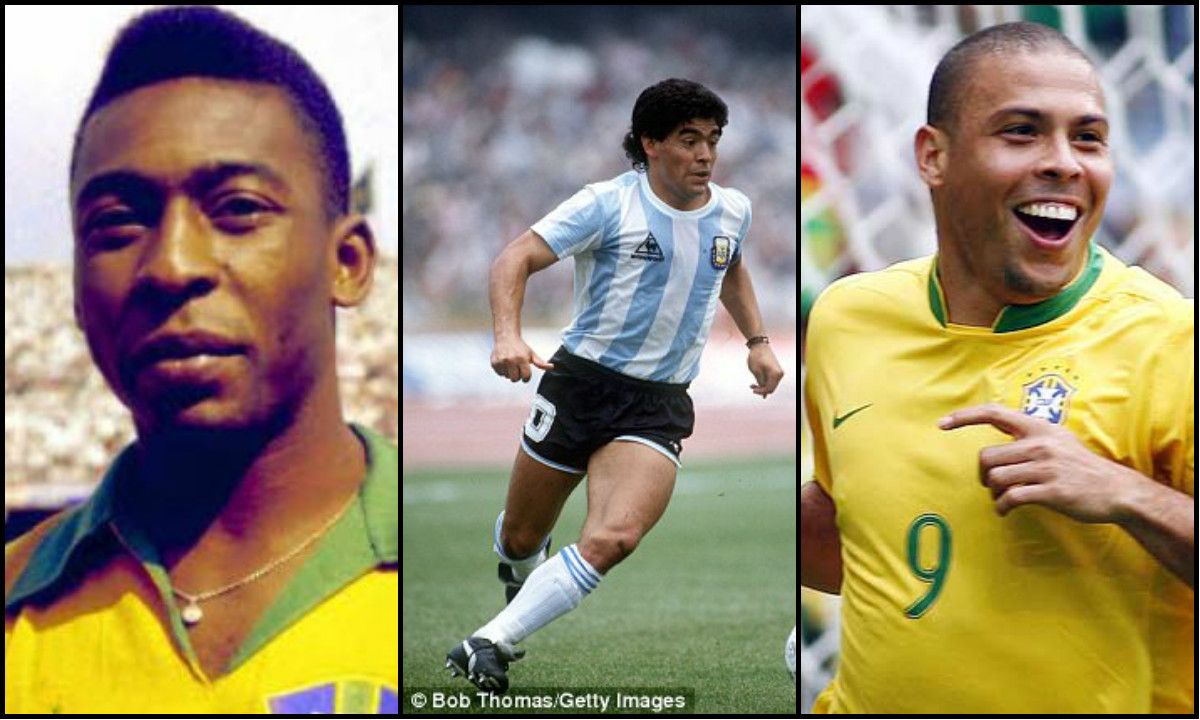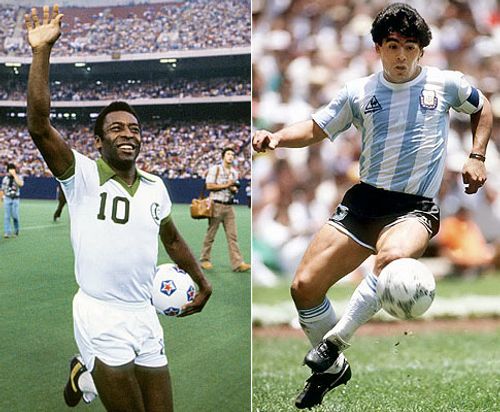
Latin American football and their endearing lack of inhibition
Cuju is the earliest known sport that resembles football. It originated in China. Our beloved game of football, as we know it, was born and brought up in Europe. It rose to popularity and attained commercial viability in Europe. Why then, everytime someone mentions football, besides Europe we are reminded of Latin America with their beaches and the narrow streets with graphiti laden walls on both sides? Is it because of the legendary strikers and goalscorers that the continent has produced?
The strikers of the glorious past

Not that other parts of the world haven't had their share of legendary goalscorers but it is a fact universally acknowledged that the best strikers throughout the history of the game have come from South America. They have delighted us over the years with their scoring prowess as much as they have brought glory to their nations.
The legendary striking duo of Pele and Maradona share among themselves 5 World Cup titles, all of which came after a flurry of goals by them.
The torch-bearers
Although the current set of strikers from South America can't boast of much international success, they surely have showcased their potential with performances for their respective clubs. Lionel Messi has popped in 240+ goals since 2004 and has an array of trophies with FC Barcelona. The 4 time Ballon d'Or winner is regarded as the best player on the planet at the moment. Neymar Jr, the 22-year old Brazillian prodigy has 60+ goals in club football and is more successful at the international level than Messi.
Sergio Aguero has 150+ goals in club football and contributed to Manchester City FC's title win in 2011-12 and 2013-14 season. Whilst Luis Suarez hasn't been lucky enough with silverware off late, he has made it clear that he doesn't need luck to find the back of the net. Radamel Falcao has earned a reputation for being an impeccable finisher in La Liga and Ligue 1.
With a South American striker in your side, you can guarantee a restless game for the opposing defence. All that being said, there is something else that makes Latin American football stand apart from European football.
The pressing game
European teams like to have a look at their opponents before they assert themselves. No matter how attacking their formations are, it is an unspoken rule with European teams to wait with the ball at their feet for their opponents to make the first move and then catch them off guard. This accounts for the incredibly calm first 15 minutes in most all-European clashes. In the ongoing FIFA World Cup, two of the all-European clashes i.e. Spain vs The Netherlands and England vs Italy shared a lot of similarities with this theory.
But that is not the case with Latin American teams. Latin American sides are more comfortable with the pressing game. Right from the kickoff, the players like to chase the ball around. Every inch of space needs to be fought for. It is almost impossible to sit back with the ball against any Latin American side.
When Greece tried to do that in their World Cup game against Colombia, they were literally swept away by the considerably weakened (due to the absence of Falcao) Colombian surge. The pressing style forces mistakes from the defenders and in turn results in early goals.
Evidently, in a match against a Latin American side, offence is the best form of defence. One cannot afford to sit back with a one goal lead and be complacent about it, as Croatia and Uruguay learnt in their World Cup matches against Brazil and Costa Rica respectively. With the likes of Neymar Jr, Fred, Hulk, Oscar among their ranks, it was always likely that Brazil would bring the attack to a fragile Croatian defence, especially after conceding early in the match.
What Uruguay did after going ahead via a Cavani penalty was criminal, and were rightfully punished by the Arsenal striker Joel Campbell. Hardly had the Uruguyans recovered from Cambell's thundering strike, they found themselves behind from a set piece. Uruguay did respond after that, they were knocking at Costa Rica's defence but merely knocking wasn't enough. Costa Rica did not stop attacking though. They never forgot that they can still score goals and were rewarded as they extended their advantage and secured a famous win.
Even during the dying minutes of the game the players were chasing the ball right to the Uruguay goalkeeper, and I'm not talking about the substitutes alone. Although, their win did not look clinical, but in the end result matters. Never had they dreamt of topping the group that comprises of four time World Champions Italy, two time world Champions Uruguay and one time World Champion England even if it's for hardly a week.
This is where Latin American football pips European football, and I have one request to the Latin Americans: never change your approach to the game. Watching a team go for all out attack throughout the 90 minutes, even when they are not trailing is a treat for the eyes.
For those of you who chose to miss the Uruguay vs Costa Rica game, it was an electrifying contest. Inspite of the fixture being a theoretical mismatch, on the field it was a very close game. The result is hardly a shock, given the proceedings of the match. What is done cannot be undone. So if you have missed this game, fret not. We have Brazil taking on Mexico on 18th June, Wednesday. Make sure you don't miss this one.
The drawback
However, this type of football has it's disadvantages. Pressing game against a team strong on the counter is fatal. This is why South & Central American teams can be vulnerable against teams like The Netherlands, Germany, Portugal and Italy, all of whom have attacking players who are quick and good on the ball.